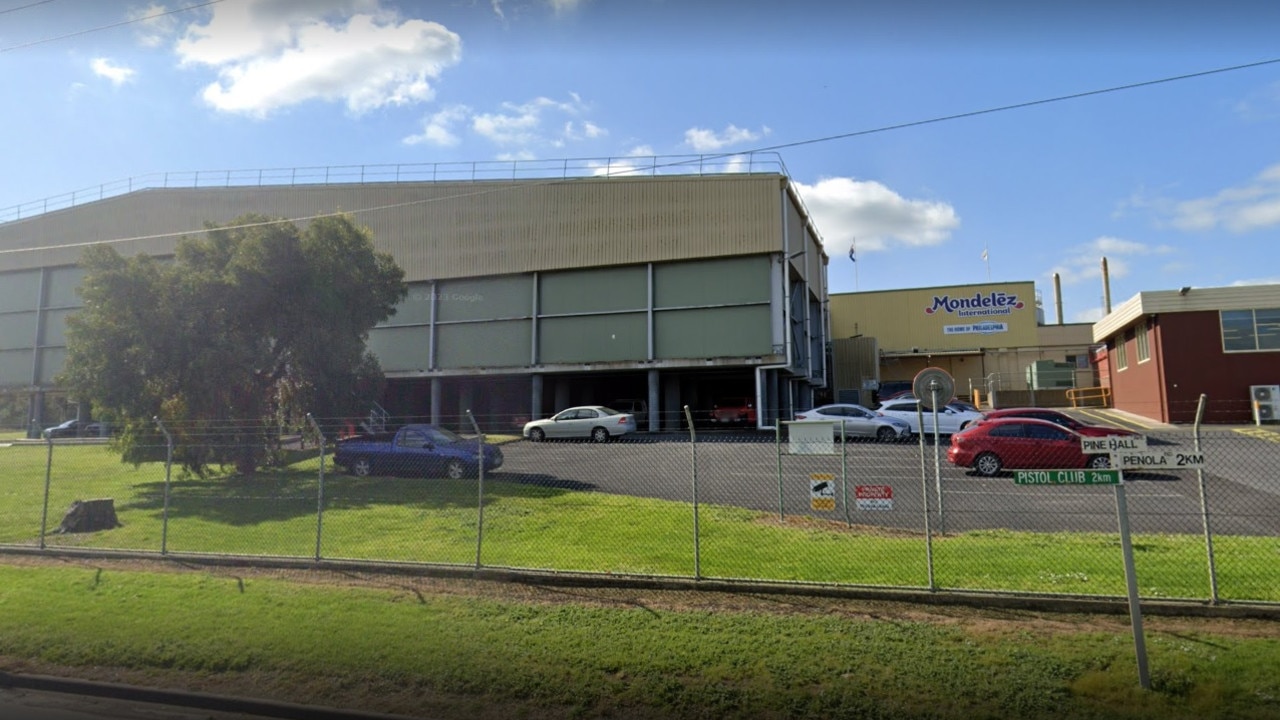Dublin Green Circular Economy Precinct would create 1300 new homes with vertical farms, industrial estate, bioreactor
A small town on the Adelaide Plains would get 1300 new homes under a proposal for a community powered by renewable energy.

SA News
Don't miss out on the headlines from SA News. Followed categories will be added to My News.
About 1300 new homes in a self-sufficient working community powered by clean energy from its own waste would be built on the outskirts of Adelaide under a bold plan unlike anything else in Australia.
SA developers Daniel Palumbo and Frank Vounasis are planning a 104ha housing estate and 400ha circular green economy precinct on rural land near Dublin, 60kms north of the city.
The 200-person town on Port Wakefield Rd would eventually swell by about 3250 people under a proposed land zone change near the Adelaide international bird sanctuary.
However, the groundbreaking plan goes much further – it includes a bioreactor in the middle of an industrial estate to create power for the whole precinct and harvest fertiliser, while vertical farms in glasshouses would feed residents.
Organic waste from the homes and local farms would in turn be used in the 6.5MW bioreactor, designed with Griffith University researchers, to create a self-sufficient, circular economy that feeds and powers itself.
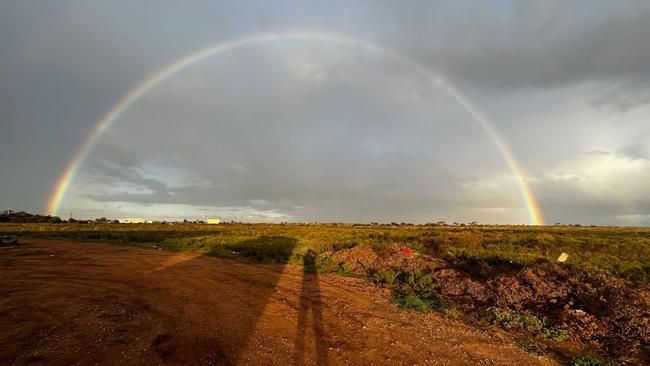
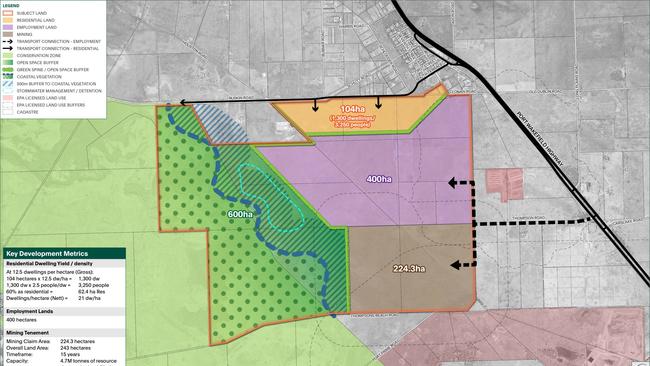
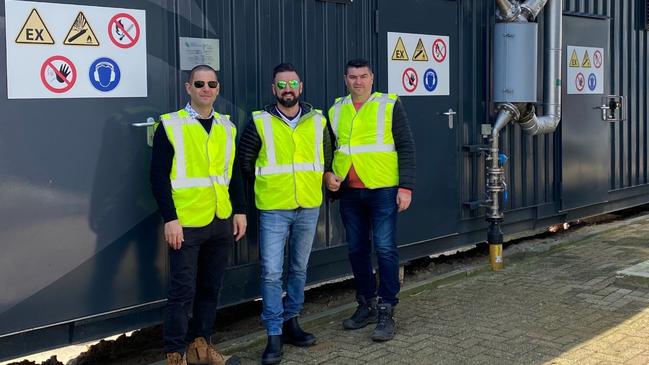
The bioreactor would generate gas and electricity for the entire precinct, lowering power prices, as well as liquid fertiliser, compost and food-grade CO2 for use in the vertical farms on-site or to be sold.
With its access to Port Wakefield Rd, the employment zone includes large land parcels for defence or other manufacturers, particularly for the renewable energy sector, providing more local jobs and potentially building on existing defence operations northeast of Dublin.
Tenants so far include crash repairers, truck companies, wind farms businesses, plastic recycling and a Hindu temple.
The entire project aims to reuse and recycle, with even the roads within the manufacturing section carefully designed to capture as much rainfall run-off as possible for reuse, Mr Vounasis said.
The entire site is more than 1300ha, which includes a mining claim and a huge section of coastal vegetation or land to be used for tree planting and carbon capture.
The rural-zoned land was failing to yield good crop volumes for the original farmers, Mr Palumbo said, prompting the sale.
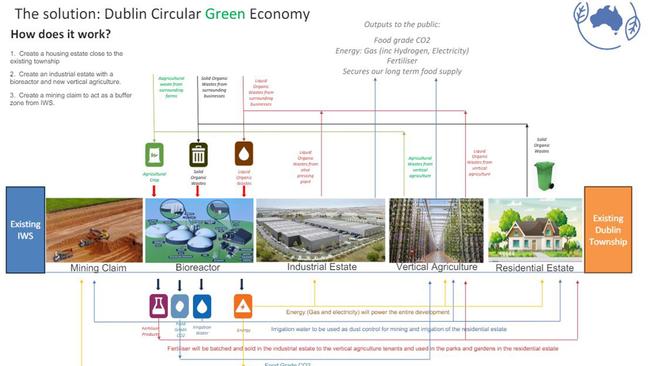
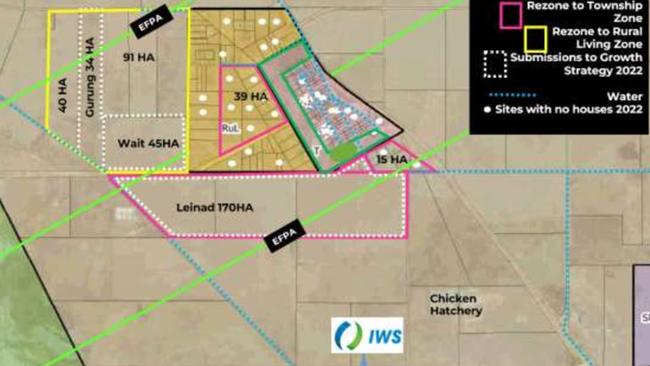
“So we look at how can we take that problem for the farmer and create a food resource,” he said. “That’s why we went down the bioreactor path.”
The bioreactor would be built in stages as tenants increase, with food grown in glasshouses to maintain temperatures.
“The by-product is fertiliser – so we can fertilise crops, or council verges, parklands,” Mr Palumbo said. “We can bring in waste streams from outside – waste pulp can go into the bioreactor, repurposing it. Even the food grown there can be use, such as the heads of carrots.
“Everyone living there participates in putting waste back into the bioreactor.”

A 224ha mining claim zone would generate fill for the residential housing estate, while creating a buffer for a nearby chicken farm and the IWS dump further south.
Treated wastewater from the homes could irrigate the vertical gardens, and a hydrogen refuelling station could be built on Port Wakefield Rd for trucks.
The staged rollout would begin as soon as approval is granted to change the land zone from rural to employment, allowing work to start on the bio reactor.
“We’re trying to show, if you think different, you get better results,” Mr Vounasis. “Right now, farms from generations ago are using drinking water.
“Farms are watering large allotments when there are other options through better design to capture rain water. We can use recycled water for farming to preserve potable water for drinking.
“Some of these ideas were set so long ago, no one has looked back at it and reconsidered.
“This is what we should be doing, but no one is pushing to do it. We should challenge this way of thinking now.”
Mr Palumbo said he hoped the circular precinct would change government policy.
“Governments should have circular economies in their 30-year plans,” he said. “We need to get communities using their waste to create cheaper cost of living.”
The proposal to rezone the land from rural to is now out for community consultation.
Planning Minister Nick Champion said innovative precincts such sa this proposal would help reduce waste and create jobs in a growing area.
“We need developments that boost the state’s sustainable energy options, create jobs and support new energy technologies and assets,” he said.
“This proposal has the potential to improve supply chains in green industries and support development of renewable energy products across the state.”
More Coverage
Originally published as Dublin Green Circular Economy Precinct would create 1300 new homes with vertical farms, industrial estate, bioreactor





